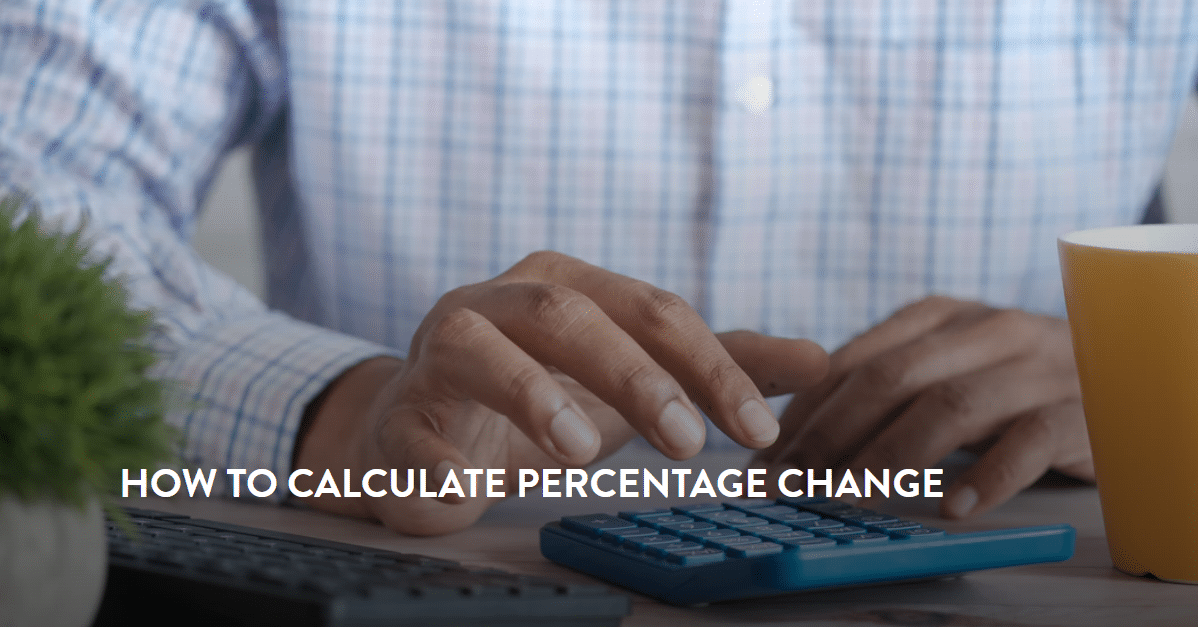- Glossary
- What Is Gross Monthly Income?
- What Is Management?
- What Is A Problem Statement?
- What Is Annual Net Income?
- What Is A Letter Of Transmittal?
- What Is Attrition?
- What Does White Collar Mean?
- What Does Blue Collar Mean?
- What Is Efficiency Vs Effectiveness?
- What Is A Dislocated Worker?
- What Is Human Resource (HR)?
- Thank You Letter Scholarships
- What Is Constructive Criticism?
- What Is A Quarter Life Crisis?
- What Is Imposter Syndrome?
- What Is Notes Payable?
- Types Of Communication
- Economic Demand
- Cost Benefit Analysis
- Collective Bargaining
- Key Performance Indicators
- What Is Gender Bias In A Job Description?
- What Is The Hidden Job Market?
- What Is The Difference Between A Job Vs. A Career?
- What Is A Prorated Salary?
- W9 Vs. 1099
- Double Declining Balance Method
- Divergent Vs Convergent Thinking
- Budgeting Process
- Types Of Intelligence
- What Is Bargaining Power?
- What Is Operating Capital?
- Difference Between Margin Vs Markup
- Participative Leadership
- Autocratic Leadership
- Authoratarian Leadership
- Situational Leadership
- Difference Between Generalist Vs Specialist
- Strategic Leadership
- Competitive Strategies
- Equity Vs Equality
- What Is Marginalization?
- Colleague Vs Coworker
- What Is The Glass Ceiling?
- What Are Guilty Pleasures?
- Emotion Wheel
- Nepotism In The Workplace
- Sustainable Competitive Advantage
- Organizational Development
- Communication Styles
- Contingent Workers
- Passive Vs Non Passive Income
- Choose A Career
- Formulas
- APR Formula
- Total Variable Cost Formula
- How to Calculate Probability
- How To Find A Percentile
- How To Calculate Weighted Average
- What Is The Sample Mean?
- Hot To Calculate Growth Rate
- Hot To Calculate Inflation Rate
- How To Calculate Marginal Utility
- How To Average Percentages
- Calculate Debt To Asset Ratio
- How To Calculate Percent Yield
- Fixed Cost Formula
- How To Calculate Interest
- How To Calculate Earnings Per Share
- How To Calculate Retained Earnings
- How To Calculate Adjusted Gross Income
- How To Calculate Consumer Price Index
- How To Calculate Cost Of Goods Sold
- How To Calculate Correlation
- How To Calculate Confidence Interval
- How To Calculate Consumer Surplus
- How To Calculate Debt To Income Ratio
- How To Calculate Depreciation
- How To Calculate Elasticity Of Demand
- How To Calculate Equity
- How To Calculate Full Time Equivalent
- How To Calculate Gross Profit Percentage
- How To Calculate Margin Of Error
- How To Calculate Opportunity Cost
- How To Calculate Operating Cash Flow
- How To Calculate Operating Income
- How To Calculate Odds
- How To Calculate Percent Change
- How To Calculate Z Score
- Cost Of Capital Formula
- How To Calculate Time And A Half
- Types Of Variables
Find a Job You Really Want In
There’s no doubt that investing can be a nerve-wracking and tricky business. However, with the right precautions, it can also be extremely profitable. To minimize risks and maximize profits, investors often use various tricks of the trade to calculate and compare potential decisions.
One of these valuable tools is comparing one economical choice to the next, otherwise known as opportunity cost. When investors aren’t sure whether they want to stick with one option or pursue the next best option, opportunity cost can be used to calculate the impact of choosing one investment over another.
In general, opportunity cost is an important part of estimating the economic effect of choosing one investment option over the other. Therefore, it can serve investors in a variety of situations.
With that in mind, this article will serve as a guide to understanding opportunity cost by explaining how it’s calculated and why it can be beneficial, as well as providing real-life examples of its use.
What Exactly Is Opportunity Cost?
As mentioned, opportunity cost is a comparison used to help investors, or anyone really, make intelligent financial decisions. After all, it takes a lot of thought to discern how making one purchase over another will affect your return on investment.
Therefore, opportunity cost represents the cost of inevitably choosing one option over the other, whereby the measurement becomes the metric you can use to make a decision.
Opportunity cost as a concept is versatile and can be applied to anything from small financial decisions made by individuals to large decisions made by businesses regarding production, time management, and capital allocation. Truly, anyone can make use of the figure.
For instance, the trade-off cost of choosing to invest in a yacht over a sailboat can be estimated through how choosing one over the other will affect your savings account. Ultimately, opportunity cost attempts to assign a measurable figure to such a trade-off.
In simpler terms, an opportunity cost is essentially the cost of the option you don’t choose.
When and Where Opportunity Cost Calculations Are Useful
Whether you’re an entrepreneur making millions, or a first-year college student, opportunity cost is a versatile calculation that can be applied to countless situations. Some common scenarios in which an opportunity cost figure could be insightful include:
-
Choosing which stock to invest in on the stock market. For investors, making a well-educated gamble on which stock to invest in can make or break their wallets. Therefore, opportunity cost can be a valuable measurement to use when comparing two different stocks.
-
Weighing the pros and cons of one possible purchase over the other. Suppose you’re thinking about whether or not you want to buy an expensive piece of furniture that’s more durable or a cheap piece of furniture with a shorter lifespan. In that case, you can use opportunity cost to figure out which one might be a better investment.
-
Deciding where to allocate business funds. Businesses require thoughtful management, and opportunity costs can be used to assess which investments will be more profitable than others.
-
Measuring the value of your time. Time is money, as they say. Especially for business owners, having the time to work on their business makes them money. Therefore, opportunity cost can be used to measure the cost of lost time.
Opportunity Cost Formula
Given the versatility of the concept, opportunity cost doesn’t have a clearly defined or designated formula. Instead, there is a common mathematical method for assessing it and coming up with useful figures. This method is as follows:
Opportunity Cost = Return on Foregone Alternative Option − Return on Chosen Option
Keep in mind that opportunity cost can be a positive or negative number. When negative, you could potentially lose more from your chosen option than you would from the alternative, whereas a positive number indicates a more profitable move.
Of course, this calculation is made much more accurate with the benefit of hindsight but can still provide useful insight into possible options currently being considered.
Opportunity Cost Examples
To further understand opportunity cost, here are two examples of different situations that outline its use:
-
Imagine an entrepreneur runs a growing candle company and takes time out of his day to produce inventory for the shop. In three hours, he can produce 100 candles, each valuing at $25 each. Essentially, three hours of his time is worth $2,500. With that in mind, he needs to repair a leaking section on the roof of his house.
He decides to do it himself to save money, as a professional would cost $1,000. However, it takes him three hours to complete the project. If we apply opportunity cost to this equation, we can see that he’s potentially lost up to $1,500. ($2,500 – $1,000 = $1,500)
-
To apply opportunity cost to typical investments, imagine that an investor could choose between investing in Apple or Tesla. At the time, he chose Apple, as the company seemed to have steady stock growth of 87%.
However, Tesla’s stock value increased at a much more exponential 542%. This means that ultimately, the investor’s opportunity cost was 455%. (542% – 87% = 455%)
Opportunity Cost and Risk
While opportunity cost isn’t the same as risk, the two concepts provide a similar outlook on investments. Risk outlines the possibility that the return on investment (ROI) will be different than its initial predicted one, resulting in a loss of profit.
On the other hand, opportunity cost relates to the idea that the returns of a chosen investment will potentially be lower than the returns of the next best option.
While both risk and opportunity cost address a potential loss, risk compares the potential performance of an investment against itself, while opportunity cost compares the performances of two different investments.
However, it’s important to note that opportunity cost can aid in deciding between two risk profiles. For example, let’s say you have the option between investment #1, which is rather precarious, but has a possible ROI of 21%, or investment #2, which is considerably less risky, but only has an ROI of 7%.
Though you’d be making far more money if #1 succeeds, you could also lose everything due to the high risk of failure. Therefore, if option #1 were to fail, there would be a significant opportunity cost associated with choosing it over option #2.
Important Limitations on Opportunity Cost
As suggested by the concept of risk, there are important limitations to opportunity cost figures. Truly, there will never be an instance where you can predict the outcome of an investment with 100% accuracy.
After all, when you’re comparing the long-term cost of two things you haven’t purchased yet, you’re bound to see a variation in your results. Over time you might find that your initial calculation was inaccurate, especially when working with something volatile like the stock market.
Additionally, if you were to compare the income you’ve lost from something like choosing to take time off work to earn your Bachelor’s degree, it can be difficult to factor all of the trade-offs accurately.
You have to consider time lost, wages lost, college cost, and the potential earnings increase you might see after achieving your degree. When calculating all of these factors, it’s incredibly easy for inaccuracies to emerge.
With that in mind, you shouldn’t expect perfect results, as regardless of how accurate your opportunity cost measurement was, the simple fact that you’re considering figures when purchasing something indicates that you’re making thoughtful financial decisions.
Setting Future Goals for Your Career
Opportunity cost is a valuable financial tool you can use to understand the benefits and downsides of choosing one investment option over the other, thus allowing you to plan for the future. Opportunity cost figures can give you insight into the direction you want to go in and guide your financial decision-making.
Think about where you see yourself in a year, or even five years. Imagine how certain investments will affect your life later down the line. Especially if you have a specific financial goal in mind, it’s important to make plans to help you achieve that goal.
For instance, if you’re currently thinking of buying a new car, you can use opportunity cost to identify the pros and cons of possible purchases. Maybe you want an inexpensive sedan, but there’s admittedly more value in a larger SUV. An opportunity cost calculation could help you navigate your decision-making, as there will undoubtedly be sacrifices to make either way.
In business-oriented situations, understanding opportunity can also allow you to make intelligent investments, even if differences are marginal. Over time, more thoughtful decision-making will help your business grow.
Ultimately, no matter what your current circumstances may be, it’s never too late to start using opportunity cost as a tool for setting and achieving future financial goals.
- Glossary
- What Is Gross Monthly Income?
- What Is Management?
- What Is A Problem Statement?
- What Is Annual Net Income?
- What Is A Letter Of Transmittal?
- What Is Attrition?
- What Does White Collar Mean?
- What Does Blue Collar Mean?
- What Is Efficiency Vs Effectiveness?
- What Is A Dislocated Worker?
- What Is Human Resource (HR)?
- Thank You Letter Scholarships
- What Is Constructive Criticism?
- What Is A Quarter Life Crisis?
- What Is Imposter Syndrome?
- What Is Notes Payable?
- Types Of Communication
- Economic Demand
- Cost Benefit Analysis
- Collective Bargaining
- Key Performance Indicators
- What Is Gender Bias In A Job Description?
- What Is The Hidden Job Market?
- What Is The Difference Between A Job Vs. A Career?
- What Is A Prorated Salary?
- W9 Vs. 1099
- Double Declining Balance Method
- Divergent Vs Convergent Thinking
- Budgeting Process
- Types Of Intelligence
- What Is Bargaining Power?
- What Is Operating Capital?
- Difference Between Margin Vs Markup
- Participative Leadership
- Autocratic Leadership
- Authoratarian Leadership
- Situational Leadership
- Difference Between Generalist Vs Specialist
- Strategic Leadership
- Competitive Strategies
- Equity Vs Equality
- What Is Marginalization?
- Colleague Vs Coworker
- What Is The Glass Ceiling?
- What Are Guilty Pleasures?
- Emotion Wheel
- Nepotism In The Workplace
- Sustainable Competitive Advantage
- Organizational Development
- Communication Styles
- Contingent Workers
- Passive Vs Non Passive Income
- Choose A Career
- Formulas
- APR Formula
- Total Variable Cost Formula
- How to Calculate Probability
- How To Find A Percentile
- How To Calculate Weighted Average
- What Is The Sample Mean?
- Hot To Calculate Growth Rate
- Hot To Calculate Inflation Rate
- How To Calculate Marginal Utility
- How To Average Percentages
- Calculate Debt To Asset Ratio
- How To Calculate Percent Yield
- Fixed Cost Formula
- How To Calculate Interest
- How To Calculate Earnings Per Share
- How To Calculate Retained Earnings
- How To Calculate Adjusted Gross Income
- How To Calculate Consumer Price Index
- How To Calculate Cost Of Goods Sold
- How To Calculate Correlation
- How To Calculate Confidence Interval
- How To Calculate Consumer Surplus
- How To Calculate Debt To Income Ratio
- How To Calculate Depreciation
- How To Calculate Elasticity Of Demand
- How To Calculate Equity
- How To Calculate Full Time Equivalent
- How To Calculate Gross Profit Percentage
- How To Calculate Margin Of Error
- How To Calculate Opportunity Cost
- How To Calculate Operating Cash Flow
- How To Calculate Operating Income
- How To Calculate Odds
- How To Calculate Percent Change
- How To Calculate Z Score
- Cost Of Capital Formula
- How To Calculate Time And A Half
- Types Of Variables





